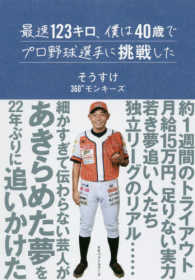Full Description
In the last twenty-five years, coronary stenting stands as the cornerstone of modern day interventional cardiology. Today many choices exist for interventionalists with the most basic delineation being bare metal stents (BMS) and drug eluting stents (DES). Within each broad category there are multiple stent delivery systems, sizes, structural differences, various metal compositions, and anti-proliferative agents for drug eluting.
There are several controversies currently surrounding coronary stents. Despite the fact that DES has been proven to decrease vessel restenosis when compared to bare metal stents, the first generation of DES increased the occurrence of late stent thrombosis, which was uncommon with bare metal stents. Additionally, stents have been used for multiple types of lesions with a significant number of these being considered off label indications. Lastly, the duration of dual anti-platelet therapy with aspirin and clopidogrel following stent implantation, especially DES, needs to be further examined by the medical community. Despite current topics of debate in stenting, much promise exists in coronary intervention with bio-absorbable stents and anti-proliferative balloons currently in development.
An understanding of the various principles of coronary stenting factors, including patient appropriateness, potential complications, and peri-operative management, is necessary for any healthcare provider currently treating cardiac patients. Perhaps most importantly, a firm understanding of the importance of dual anti-platelet therapy can have a significant impact on the prevention of stent complications, especially stent thrombosis, which is often associated with significant mortality. This guide will serve as a reference for those healthcare providers who evaluate potential coronary stenting patients, as well as to help them properly manage those who are already stent recipients. Using the ultra-concise, portable format of the Oxford American Pocket Note series, this volume will prove to be a practical guide for interventionalists seeking a quick reference in coronary stenting.
Contents
1. Introduction
· A brief history of the evolution of coronary stenting with an overview of stent classification, purpose of this guide, and future direction.
2. Stent Classification
· Bare metal stents vs Drug eluting stents.
· Briefly discuss major meta-analyses and registries on the topic
· Description of currently available stents.
3. Indications for Coronary Revascularization
· Current indications for stenting (ie focal lesions, avoidance of bifurcation lesion, large vessels, non-diabetic patients, etc)
· Discussion of stenting in acute coronary syndromes.
· Role of CABG versus DES for multi-vessel disease (SYNTAX trial)
· Discussion medical therapy for stable angina (COURAGE) and medical therapy for late presentation of myocardial infarction (OAT trial)
4. Pre-catheterization Assessment
· Importance of assessment of renal function, anemia and bleeding risks, co-morbidities, current medications which may need to be held or adjusted (metformin, insulin, etc)
· Also assessment of any future surgical procedures and determination of compliance for post PCI anti-platelet therapy and its potential contribution to stent complication/thrombosis.
· Choice of intraprocedural anti-coagulation and anti-platelet therapy
· Need for embolic protection, IABP, and transvenous pacing
· Access site management
5. Stent Delivery
· Sizing and delivery basics with brief discussion of cardiac catheterization and stent delivery/deployment including available catheters, wires, etc.
· Discussion of adjunctive measures such as FFR (FAME trial) and IVUS to aid in lesion candidacy and stent guidance pre and post intervention
· Multiple illustrations
· Special lesion setups: bifurcations, ostial lesions, heavily calcified lesions, vein grafts, left main
6. Potential Complications
· Contrast nephropathy and other complications including bleeding (hematoma, vessel injury), MI/CVA, emergent coronary bypass, heart block, cardiac arrest, contrast nephropathy.
· Management of hypotension, hypertension, heart failure, and severe allergic reaction
· Specific risk of various complications for patient discussion (table)
· Discussion of risk factors for in-stent restenosis as well as acute and late stent thrombosis with a focus on the inherent differences in presentation with each
7. Medical Therapy
· Medical therapies including anti-platelet agents (including Prasugrel), beta blockers, statins, and ACE inhibitors in patients with coronary artery disease and coronary stents
· Other potential modifiers of risk including diet, exercise, weight loss, and smoking cessation.
· Maintenance anti-platelet therapy for different types of stents (BMS vs DES) and discussion of potential need for longer duration.
· Use of aspirin, clopidogrel, and warfarin in patients with atrial fibrillation/mechanical heart valves/etc.
8. Perioperative Management
· High risk periods following stent implantation
· Potential for IIb/IIa bridging
· Clopidogrel hold and re-initiation.
9. Current Controversies
· In stent restenosis
· Acute and late stent thrombosis with DES, off label use including vein grafts, duration of dual anti-platelet therapy and consequences of premature discontinuation.
10. Stress testing/surveillance
· Indications for repeat heart catheterization, stress testing
11. Future Developments
· Bioabsorbable stents, new stent delivery systems, laser and atherectomy developments, imaging technology including CT angiogram
12. Provider and Patient Resources
13. References







